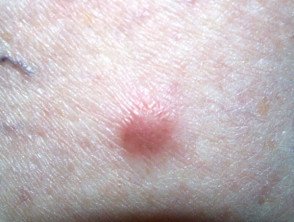
Dermatofibromas
What are dermatofibromas?
Dermatofibromas are benign skin nodules characterized by their firm consistency. Resembling a mole or pimple, they are generally harmless and non-cancerous, but can occasionally cause discomfort or become tender to touch.
What causes dermatofibromas?
These nodules are primarily made up of fibrous tissue, which is similar to scar tissue. Their formation is often linked to minor skin traumas like insect bites or ingrown hairs. While they are persistent and won't resolve spontaneously, some individuals have a predisposition to develop multiple dermatofibromas.
What are the symptoms of dermatofibromas?
Dermatofibromas usually present as small nodules, roughly the size of a pencil eraser or smaller. They can vary in color, from brown to pink, and are predominantly found on the legs and arms. The nodules may either be flush with the skin or slightly raised. When pinched or irritated, they can become more prominent or bleed, especially if they are inadvertently nicked during shaving.
How do I treat dermatofibromas?
Since dermatofibromas don't vanish on their own, surgical excision is the primary method to remove them. A technique called punch excision is commonly employed. In this method, a circular, cookie-cutter-like tool, known as a punch, is utilized to extract the nodule, followed by suturing the wound. However, due to potential scarring, surgical removal is typically reserved for nodules that cause pain or irritation.
How do I prevent dermatofibromas?
Complete prevention of dermatofibromas is challenging, especially for individuals with a genetic predisposition. However, measures like using insect repellents to avert bug bites or employing shaving gels designed for sensitive skin, such as Aveeno, can mitigate the risk of developing these nodules.
Sometimes dermatofibromas can have a lot of pigmentation around them, and they can get mistaken for moles.
Credit: DermNet NZ
The “dimple sign” is when the dermatofibroma gets pinched and it indents.
Credit: DermNet NZ



